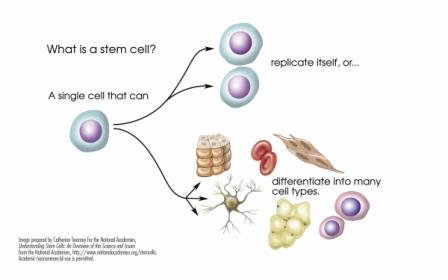Stem cells are undifferentiated cells that have the potential to differentiate into specific cells. These remarkable building blocks of life can replace or repair damaged tissues and cells. Based on this, scientists insert stem cells into areas of the body to heal or replace tissue and cells effected by disease.
can replace or repair damaged tissues and cells. Based on this, scientists insert stem cells into areas of the body to heal or replace tissue and cells effected by disease.
Click Image for Larger Image >>>
Three Classifications of Stem Cells:
Researchers see pluripotent stem cells as the holy grail of medicine because of their ability to differentiate into any cell that is needed. The pluripotent are often referred to as “unlimited” stem cells. Turipotent is avoided because extraembryonic tissue is not coveted. Multipotent, while it certainly has great ability and use, is referred to as “limited” stem cells because of their inability to widely differentiate.